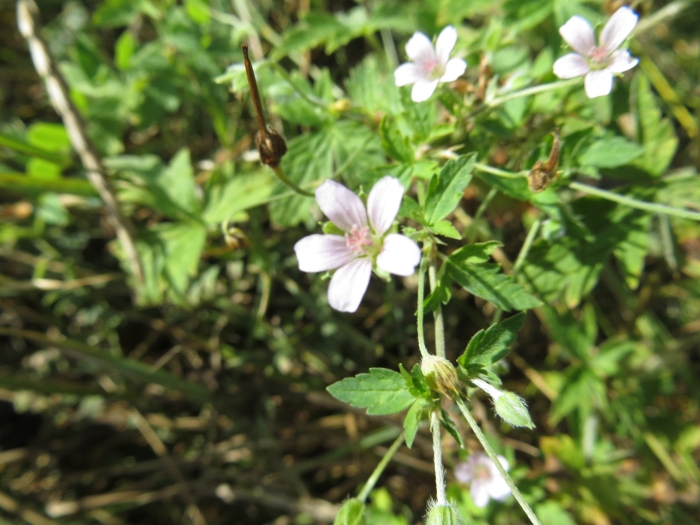Siberian Cranesbill
(Geranium sibiricum)
Siberian Cranesbill (Geranium sibiricum)
/
/

Andrey Sdobnikov
CC BY 4.0
Image By:
Andrey Sdobnikov
Recorded By:
Copyright:
CC BY 4.0
Copyright Notice:
Photo by: Andrey Sdobnikov | License Type: CC BY 4.0 | License URL: http://creativecommons.org/licenses/by/4.0/ | Rights Holder: Andrey Sdobnikov | Publisher: iNaturalist | Date Created: 2014-08-30T14:20:02-07:00 |

























Estimated Native Range
Summary
Geranium sibiricum, commonly known as Siberian cranesbill, is a herbaceous perennial plant native to a variety of habitats including forest margins, meadows, grasslands, and riverbanks in temperate regions of Asia and Eastern Europe, including Romania. It typically grows to a height of 8-24 inches (20-60 cm) and features a clumping growth habit with thin, heavily branched stems. The foliage consists of small, deeply lobed leaves that are green in color, providing a delicate texture in garden settings.
Siberian cranesbill is valued for its resilience and adaptability, making it a suitable choice for gardeners seeking a low-maintenance plant. It produces small, violet-blue flowers with rounded petals from late spring to early summer, which are moderately showy and attract pollinators. This species is often used in border plantings, rock gardens, and as ground cover due to its spreading nature. It thrives in full sun to part shade and prefers moist, well-drained soils but can tolerate a range of soil conditions. While generally disease-resistant, it can be susceptible to rust and leaf spot. Siberian cranesbill is not known for aggressive roots or significant invasiveness, but it can self-seed and spread within the garden if not managed.CC BY-SA 4.0
Siberian cranesbill is valued for its resilience and adaptability, making it a suitable choice for gardeners seeking a low-maintenance plant. It produces small, violet-blue flowers with rounded petals from late spring to early summer, which are moderately showy and attract pollinators. This species is often used in border plantings, rock gardens, and as ground cover due to its spreading nature. It thrives in full sun to part shade and prefers moist, well-drained soils but can tolerate a range of soil conditions. While generally disease-resistant, it can be susceptible to rust and leaf spot. Siberian cranesbill is not known for aggressive roots or significant invasiveness, but it can self-seed and spread within the garden if not managed.CC BY-SA 4.0
Plant Description
- Plant Type: Herb
- Height: 1-1.5 feet
- Width: 1-1.5 feet
- Growth Rate: Moderate
- Flower Color: Blue, Purple
- Flowering Season: Summer
- Leaf Retention: Deciduous
Growth Requirements
- Sun: Full Sun, Part Shade
- Water: Medium
- Drainage: Medium
Common Uses
Border Plant, Butterfly Garden, Deer Resistant, Low Maintenance, Rabbit Resistant
Natural Habitat
Forest margins, meadows, grasslands, and riverbanks in temperate regions of Asia and Eastern Europe
Other Names
Common Names: Siberian Crane’s-Bill, Asian Cranesbill
Scientific Names: , Geranium sibiricum, Geranium acrocarphum, Geranium amurense, Geranium europaeum, Geranium europaeum, Geranium popovii, Geranium ruthenicum, Geranium sibiricum f. glabrius, Geranium sibiricum subsp. eusibiricum
GBIF Accepted Name: